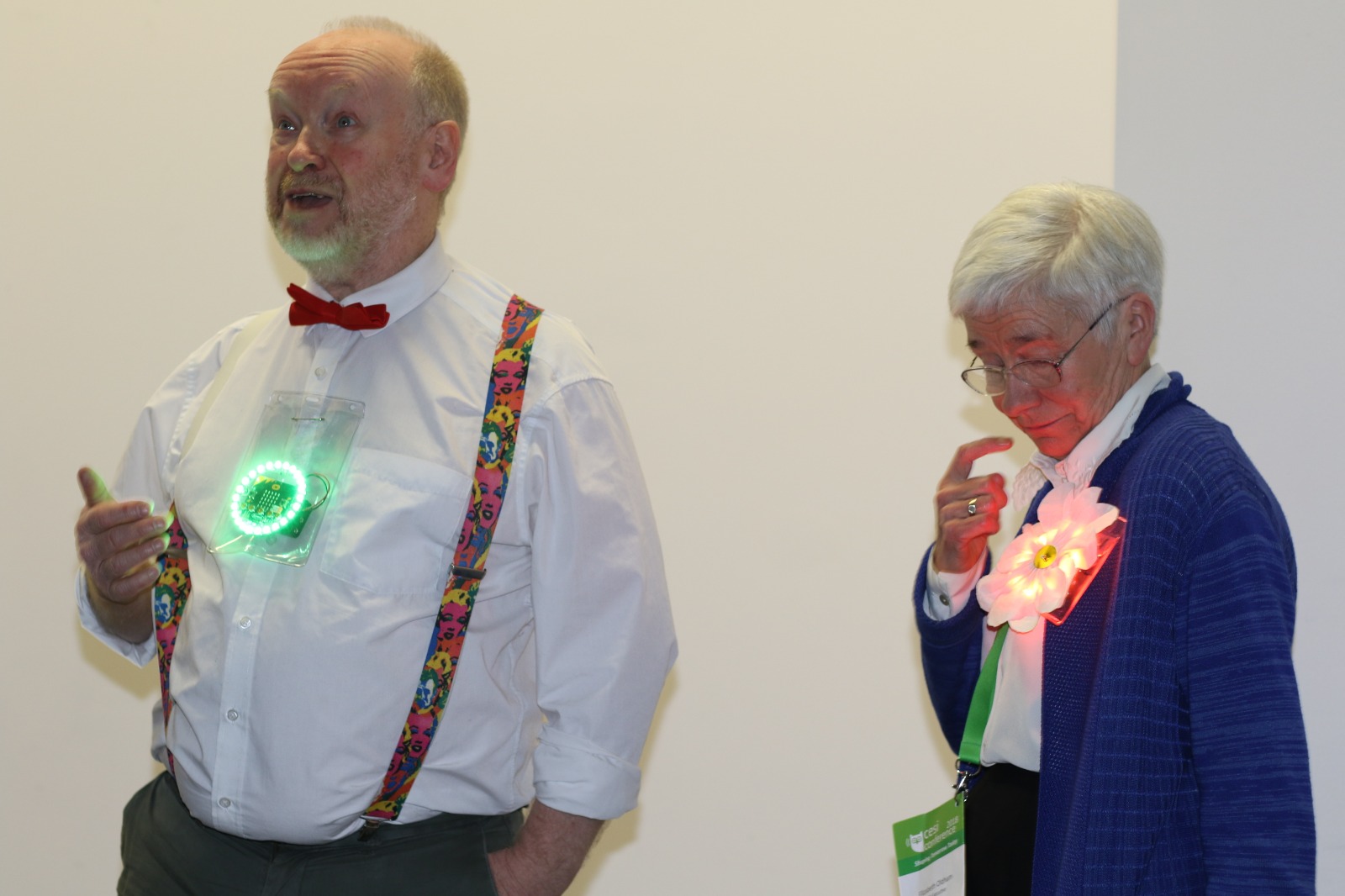
I had a mad idea.
Having learnt all about the amazing Microbit at CESI•CS meetings and in particular their capacity to inter-communicate using Bluetooth Low Energy (BLE) after being shown by the indefatigable Keith Quille, I wondered “how many Microbits could be broadcasting at once?” and “could I put together a voting system where the audience have Microbits and the speaker has a wearable with Microbit that listens for their votes and displays the outcome?”
I had been asked by the Computers in Education Society of Ireland (CESI) to present a keynote speech with my good friend and colleague Elizabeth Oldham at the CESI conference on 10th March 2018 at Dublin City University. I told Elizabeth about my idea and suggested we dramatise disagreement from time to time in the speech and then ask the audience to settle our dispute. She agreed!
Keith Quille also thought I wasn’t mad, but I’m not confident he is the best judge 🙂
So, Keith started me off with a first go at a program for each Microbit. Then I tried at our CESI•CS meetings to get participants to try and solve the problem – they all came up trumps within only an hour or so, some with no experience at all – amazing!
In Cork, a group with primary and secondary teachers quickly made a solution:
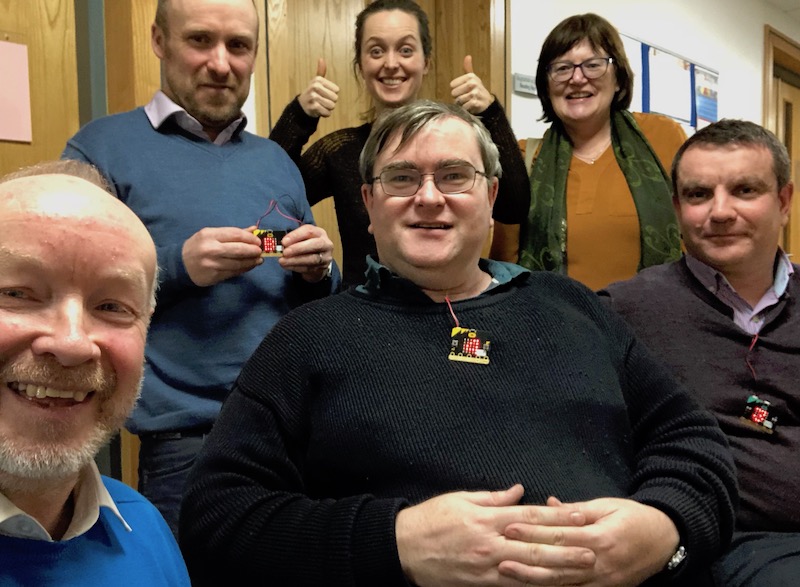
In Donegal, Sharon, Pauric and Claire collaborated to make their solution:
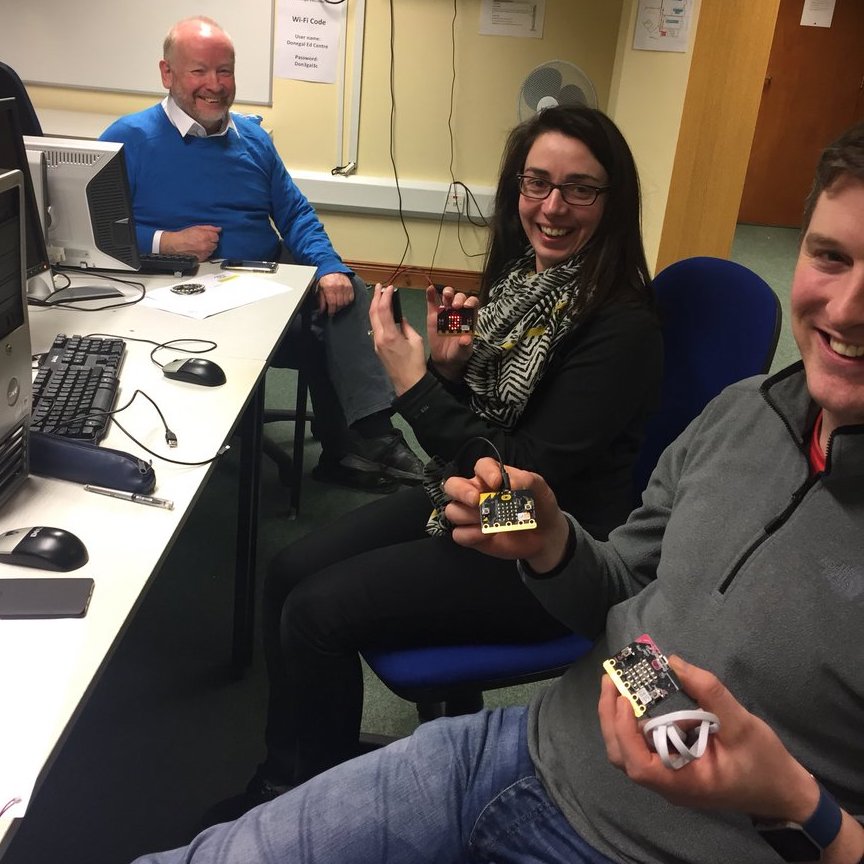
In Athlone, Elizabeth and Maeve made a plan, using a Design Thinking process by treating me as their client and empathising, before writing down their ideas and then programming:
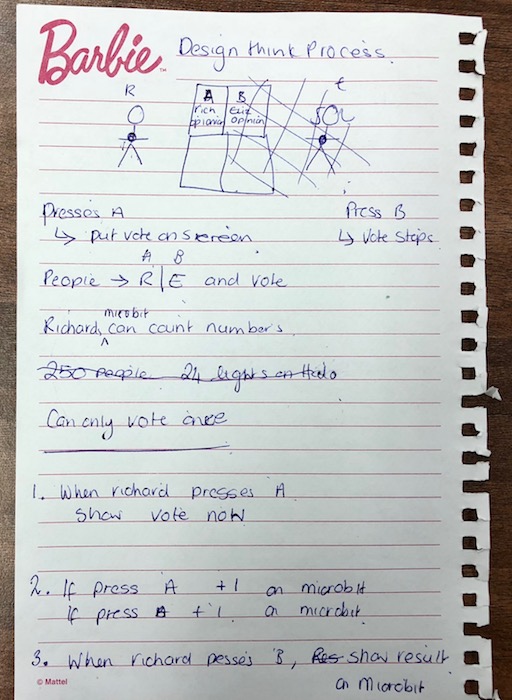
In each case, we discussed design processes, collaboration and the project work proposals in the Leaving Certificate for Computer Science. There were good discussions about foundations, progression and continuity, since all the CESI•CS meetings included primary and post-primary teachers.
So, having established feasibility, I set about making something Elizabeth would be prepared to wear, so cut up an old shirt and got stitching and glueing according to this fabric flower design.
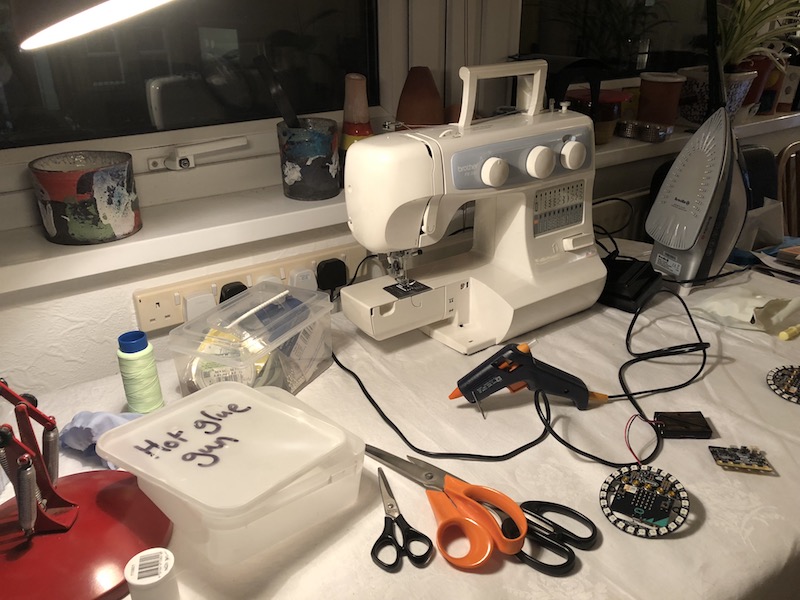
And the result (from a distance it looked OK!):
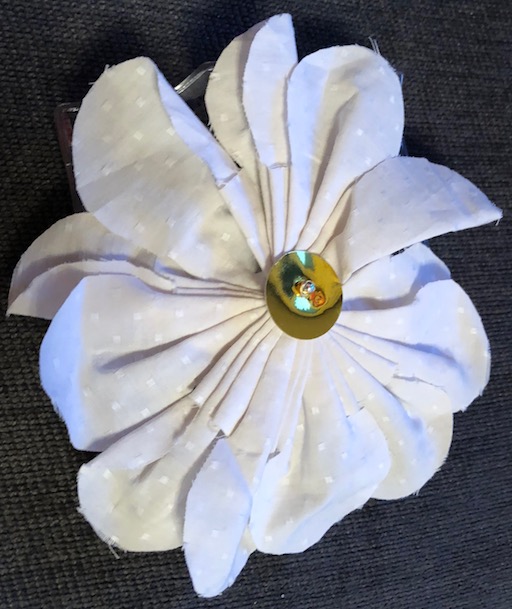
Behind her flower (and with no adornment on my wearable) was a Kitronix Zip Halo fixed to a Microbit, and with a safety pin provided by Adrienne Webb (thanks!) Elizabeth pinned it to her cardigan, and I mine to my shirt.
The final task was to complete the programming. With Keith’s inspiration and the many design conversations and prototypes made by CESI•CS participants, I finally completed the code with two hours to spare – I only had time to test with three audience voting Microbits, so there was no certainty it would work. Once in the room and with minutes to spare, we set about downloading the audience program to a pile of Microbits generously lent to me by Stephen Howell of Microsoft. It couldn’t be done without the generous help of Stephen Howell, Keith Quille, Tony Riley and John Hegarty. We think we had over fifty voting in the room!
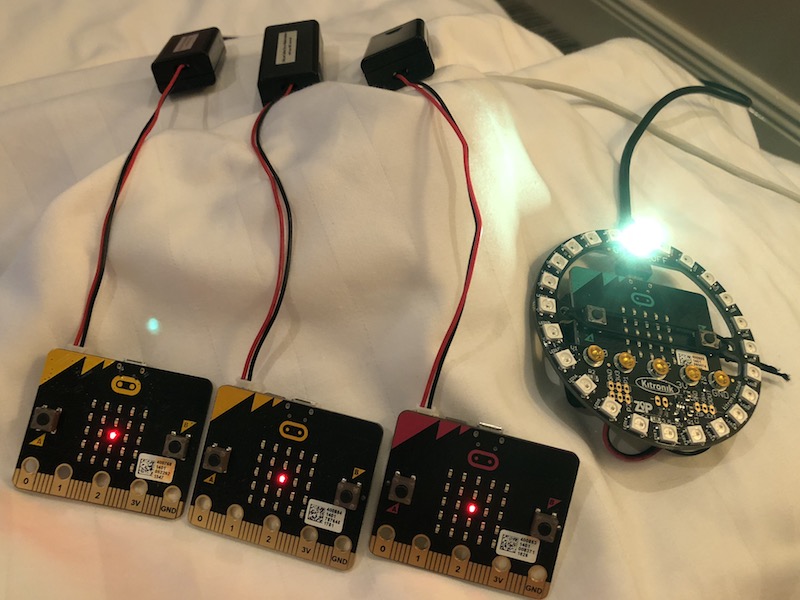
There were three programs – a program for the audience ‘microbit-audience’, a program for my wearable to control the voting process & display votes for ‘A’ positions ‘microbit-A-speaker’, and a program for Elizabeth’s wearable to display votes for ‘B’ positions ‘microbit-B-speaker’:

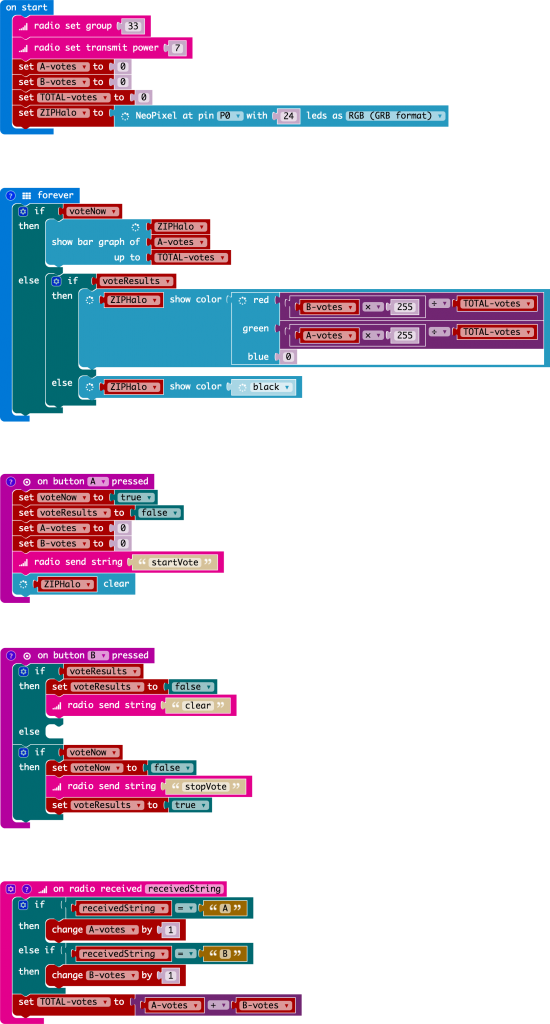
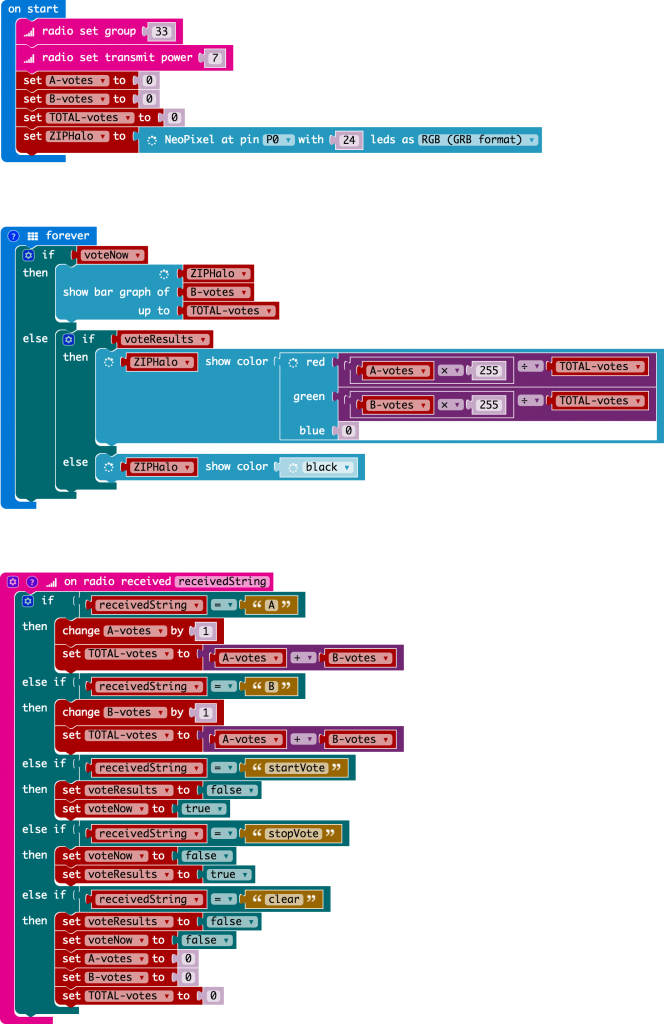
I leave it to the reader to puzzle out how it all worked and will welcome suggestions for improvement!
